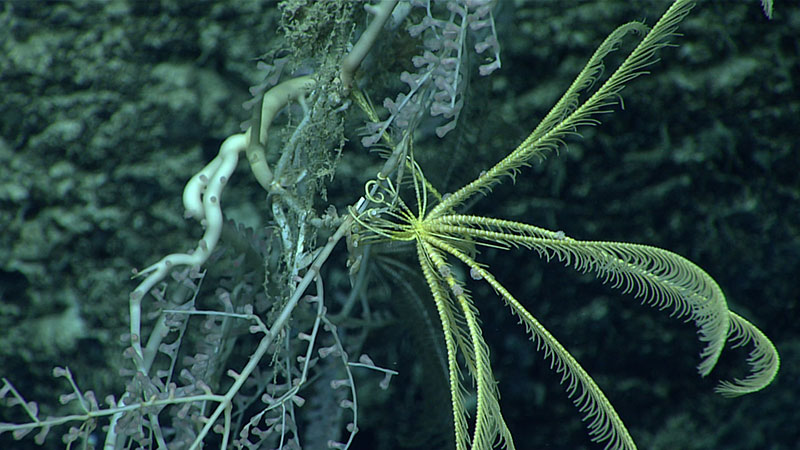Feather stars are sometimes incorrectly called unstalked crinoids. Larvae do develop a stalk after they settle out of the plankton, but they shed it when still very small. A single remaining uppermost stalk segment, the centrodorsal, bears hook-like cirri for clinging to the seafloor or other invertebrates, such as corals and sponges. The long prehensile cirri of this feather star are characteristic of family Thalassometridae, and this is also likely a new species.
Download larger version (jpg, 895 KB).
